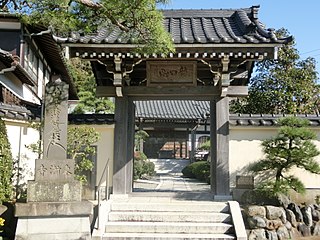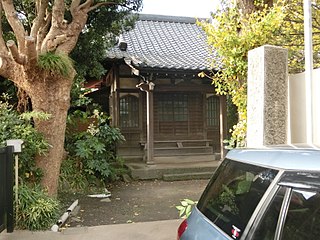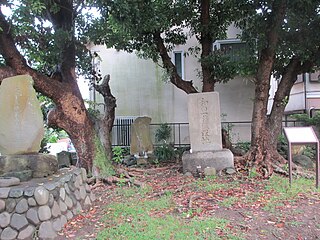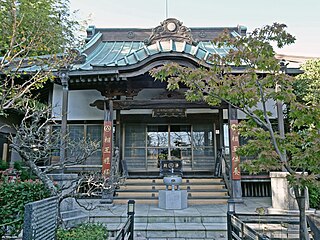35 Sights in Kamakura, Japan (with Map and Images)
Legend
Premium Sights
Book tickets, guided tours and activities in Kamakura.
Guided Free Walking Tours
Book free guided walking tours in Kamakura.
Welcome to your journey through the most beautiful sights in Kamakura, Japan! Whether you want to discover the city's historical treasures or experience its modern highlights, you'll find everything your heart desires here. Be inspired by our selection and plan your unforgettable adventure in Kamakura. Dive into the diversity of this fascinating city and discover everything it has to offer.
Sightseeing Tours in KamakuraActivities in KamakuraTsurugaoka Hachimangū (鶴岡八幡宮) is the most important Shinto shrine in the city of Kamakura, Kanagawa Prefecture, Japan. The shrine is a cultural center of the city of Kamakura and serves as the venue of many of its most important festivals with two museums.
2. Kenchō Temple
Kenchō-ji (建長寺) is a Rinzai Zen temple in Kamakura, Kanagawa Prefecture, Japan, which ranks first among Kamakura's so-called Five Great Zen Temples and is the oldest Zen training monastery in Japan. These temples were at the top of the Five Mountain System, a network of Zen temples started by the Hōjō Regents. Still very large, it originally had a full shichidō garan and 49 subtemples. It was founded by Chinese monk Lanxi Daolong, also known as Rankei Doryū, of the Song dynasty at the invitation of Hōjō Tokiyori. The temple was constructed on the orders of Emperor Go-Fukakusa and completed in 1253, fifth year of the Kenchō era, from which it takes its name.
3. Tokei-ji
Matsugaoka Tōkei-ji (松岡山東慶寺), also known as Kakekomi-dera (駆け込み寺) or Enkiri-dera (縁切り寺), is a Buddhist temple and a former nunnery, the only survivor of a network of five nunneries called Amagozan (尼五山), in the city of Kamakura in Kanagawa Prefecture, Japan. It is part of the Rinzai school of Zen's Engaku-ji branch, and was opened by Hōjō Sadatoki and founding abbess Kakusan-ni in 1285. It is best known as a historic refuge for women who were abused by their husbands. It is for this reason sometimes referred to as the "Divorce Temple".
4. Kamakura Museum of National Treasures
The Kamakura Museum of National Treasures or Kamakura Museum or Kamakura National Treasure House is a museum located on the grounds of Tsurugaoka Hachiman-gū in Yukinoshita, Kamakura, Kanagawa Prefecture, Japan. The museum houses around 4800 objects from the Kamakura region including sculptures, paintings and industrial art objects. Most of these works originate from the Kamakura and Muromachi periods, spanning from the 12th to the 16th century. Some of the items were produced in China and imported to Japan.
Wikipedia: Kamakura Museum of National Treasures (EN), Website
5. Zeniarai Benzaiten Ugafuku Shrine
Zeniarai Benzaiten Ugafuku Shrine , popularly known as Zeniarai Benten, is a Shinto shrine in Kamakura, Kanagawa Prefecture, Japan. It is a small shrine, but the second most popular spot in Kamakura after Tsurugaoka Hachimangū. Zeniarai Benzaiten is popular among tourists because the waters of a spring in its cave are said to be able to multiply the money washed in it. The object of worship is a syncretic kami that fuses a traditional spirit called Ugafukujin (宇賀福神) with the Buddhist goddess of Indian origin Sarasvati, known in Japanese as Benzaiten. The shrine is one of the minority in Japan that still shows the fusion of native religious beliefs and foreign Buddhism, which was normal before the Meiji restoration. Zeniarai Benzaiten used to be an external massha of Ōgigayatsu's Yazaka Daijin (八坂大神), but became independent in 1970 under its present name.
6. Komei-ji
Tenshōzan Renge-in Kōmyō-ji (天照山蓮華院光明寺) is a Buddhist temple of the Jōdo sect in Zaimokuza, near Kamakura, Japan, the only major one in the city to be close to the sea. Kōmyō-ji is number one among the Kantō Jūhachi Danrin (関東十八檀林), a group of 18 Jōdo temples established during the Edo period by Tokugawa Ieyasu, and dedicated to both the training of priests and scholarly research. It is also the sect's head temple for the Kantō region. In spite of the fact it is a Jōdo sect temple, Kōmyō-ji has several of the typical features of a Zen temple, for example a sanmon, a pond and a karesansui.
7. Meigetsu Temple
Fugenzan Meigetsu-in (福源山明月院) is a Rinzai Zen temple of the Kenchō-ji school in Kita-Kamakura, Kanagawa, Japan. It is also known as The Temple of Hydrangeas (ajisai-dera). The main object of worship is goddess Shō Kannon (聖観音).
8. Hongaku-ji Temple
Hongakuji Temple is the main temple of Nichiren Buddhism in Kamakura City, Kanagawa Prefecture. The name of the mountain is Mt. Myogon. It is also called "Higashi Minobu" because it divided the remains of Nichiren at Kuonji Temple on Mt. Minobu. It is located near Kamakura Station, and across the street from Komachi Oji (Tsuji Kyoho Street) is the Chokozan Myohonji Temple, the main temple of Nichiren Buddhism.
9. 安養院
Gionzan An’yō-in Chōraku-ji (祇園山安養院長楽寺) is a Jōdo shū Buddhist temple in Kamakura, Kanagawa, Japan. Famous for its rhododendrons, it was named after its founder's posthumous name. The main object of worship is Amida Nyorai, but it also enshrines Senju Kannon, Goddess of Mercy. An’yō-in is Number three of the 33 temples of the Bandō Sanjūsankasho pilgrimage circuit.
10. Jōchi Temple
Kinpōzan Jōchi-ji (金宝山浄智寺) is a Buddhist Zen temple in Kita-Kamakura, Kanagawa Prefecture, Japan. It belongs to the Engaku-ji school of the Rinzai sect and is ranked fourth among Kamakura's Five Mountains. The main objects of worship are the three statues of Shaka, Miroku, and Amida Nyorai visible inside the main hall.
11. 妙法寺
Ryōgonzan Renge-in Myōhō-ji (楞厳山蓮華院妙法寺) is a Buddhist temple of the Nichiren sect in Kamakura, Kanagawa, Japan. It is one of a group of three built near the site in Matsubagayatsu, or the Valley of Pine Needles (松葉ヶ谷), where Nichiren, founder of the Buddhist sect that bears his name, is supposed to have had his hut. The temple has also close ties with Prince Morinaga and the Imperial House.
12. 宝戒寺
Kinryūzan Shakuman-in Endon Hōkai-ji (金龍山釈満院円頓宝戒寺) is a Buddhist temple in Kamakura, Kanagawa Prefecture, Japan. Often called Hagidera (萩寺), or "bush-clover temple", because those flowers are numerous in its garden, its existence is directly linked to a famous tragedy that on July 4, 1333 wiped out almost the entire Hōjō clan, ruler of Japan for 135 years. The temple was founded expressly to enshrine the souls of the 870 members of the clan who, in accordance with the samurai code of honor, committed suicide on that day at their family temple (bodaiji) of Tōshō-ji to escape defeat. Together with ancient Sugimoto-dera, Hōkai-ji is the only temple of the Tendai denomination in Kamakura. Formerly a branch temple of the great Kan'ei-ji, after its destruction it became a branch of Enryaku-ji.
13. Jufuku-ji
Kikokuzan Kongō Jufuku Zenji (亀谷山金剛寿福禅寺), usually known as Jufuku-ji, is a temple of the Kenchō-ji branch of the Rinzai sect and the oldest Zen temple in Kamakura, Kanagawa Prefecture, Japan. Ranked third among Kamakura's prestigious Five Mountains, it is number 24 among the Thirty-Three Kamakura Kannon pilgrimage temples and number 18 of the Kamakura Nijūyon Jizō (鎌倉二十四地蔵) temples. Its main object of worship is Shaka Nyorai.
14. 青蓮寺
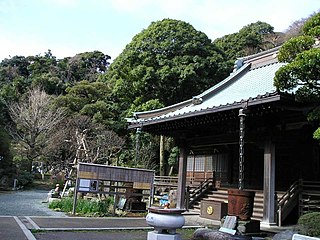
Shorenji is a temple of the Koyasan Shingon sect located in Tehiro, Kamakura City, Kanagawa Prefecture. It is a branch of Koyasan Hojuin (Muryojuin). More specifically, it is called Hanjozan Noiin Shorenji. It is a preparatory branch temple of the Koyasan Shingon sect. It is the 59th temple of the 88 temples in the Kanto region, the 88th temple of the New Shikoku 88 temples in the eastern region, and the 19th temple of the 21 temples in Sōshū.
15. Sugimotodera-Temple
Sugimoto-dera is a Buddhist temple in Kamakura, Kanagawa Prefecture, Japan, one of the oldest temples in Kamakura and, together with Hōkai-ji, the only one of the Tendai denomination. The temple is Number one of the Bandō Sanjūsankasho pilgrimage circuit. Two of the three statues of goddess Kannon it enshrines are Important Cultural Properties. Sugimotodera is nicknamed Geba Kannon, because horsemen never failed to dismount from their steeds when they passed by. The temple is a branch temple of Hōkai-ji.
16. 安国論寺
Myōhōkekyōzan Ankokuron-ji (妙法華経山安国論寺) is a Buddhist temple of the Nichiren sect in Kamakura, Kanagawa, Japan. It is one of a group of three built near the site in Matsubagayatsu (Valley of Pine Needles where Nichiren, founder of the Buddhist sect that bears his name, is supposed to have had his hut.
17. Gokurakuji Temple
Gokuraku-ji (極楽寺) is a Buddhist temple of the Shingon sect located in Kamakura, Kanagawa Prefecture, Japan. It was founded in 1259 by Ninshō (1217-1303) and has been restored and rebuilt many times since then.
18. Ryūhōji Temple
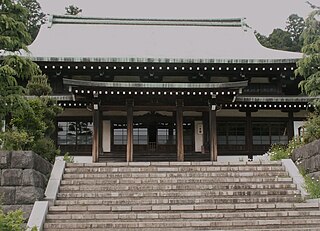
Ryuhoji Temple is a temple of the Soto sect located in Ueki, Kamakura City, Kanagawa Prefecture. The name of the mountain is Yokokuzan. It is said that the main temple is a statue of Shakyamuni Buddha, the opening is Hojo Tsunari, and the opening is Tai Ryū Sōei.
19. Myohonji Temple
Myōhon-ji (妙本寺) is one of the oldest Nichiren sect temples in Kamakura, Kanagawa. Its official name is Chōkō-zan Myōhon-ji (長興山妙本寺). "Chōkō" comes from the posthumous name of Nichiren's father and "Myōhon" from his mother's.
20. 常楽寺
Jorakuji Temple is a temple of the Kenchoji sect of the Rinzai sect located in Ofuna, Kamakura City, Kanagawa Prefecture, Japan. The name of the mountain is Mt. Awafune. The main Buddha is Amitabha. It was founded in the 3rd year of Jiayi (1237), and the foundation was opened by Hojo Taitoki, and the opening was by the retreat of cultivation.
21. Jōmyōji Temple
Tōkasan Jōmyō Zenji (稲荷山浄妙寺) is a Zen Buddhist temple of the Rinzai sect, Kenchō-ji school, in Kamakura, Kanagawa Prefecture, Japan. Jōmyō-ji is Number Five of the five temples known as Kamakura Gozan, and the only one of the five not founded by a member of the Hōjō clan. Jōmyō-ji has instead, as nearby Zuisen-ji, deep ties with the Ashikaga clan, and was one of the family's funeral temples (bodaiji). For this reason the family's kamon, or crest, is ubiquitous on its premises. The first three characters of its full name mean "Inari mountain", presumably from the hill of the same name where it stands, in its turn named after an ancient Inari myth. Jōmyō-ji has given its name to the surrounding area, the characters for which have been however deliberately changed from 浄妙寺 to 浄明寺.
22. カトリック雪ノ下教会
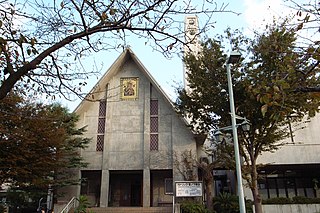
Catholic Yukinoshita Church is a Christian Catholic church and cathedral located in Kamakura, Kanagawa Prefecture. A church dedicated to Our Lady of Perpetual Help. It is a cathedral in the Catholic Diocese of Yokohama, Kanagawa District 4.
23. Ryūkō-ji (Fujisawa)
Ryūkō-ji (龍口寺) is a temple of the Nichiren Shū in the city of Fujisawa, Kanagawa Prefecture, Japan. It stands on the site of the former Tatsukuchi Execution Grounds, and its name uses the same two kanji meaning "dragon mouth"(龍口). It was here that Nichiren, namesake of the Buddhist sect, was to have been executed, but was spared. It was founded in 1337 by Nippō, a disciple of Nichiren.
24. Jokomyoji Temple
Jokomyoji is a Shingon Susen Wakuji shrine in Ogigaya, Kamakura City, Kanagawa Prefecture. The mountain is Senkokuzan. Opening is Hojo Cho. The mountain is Shina. The principal is Amida Nyorai. In a deep temple related to Hojo and Ashikaga, Takashi Ashikaga tells him that he was in the temple just before Emperor Godaigo raised his army. No. 82 of the 88th sacred place in the new Shikoku East.
25. 長勝寺
Ishiizan Chōshō-ji (石井山長勝寺) is a Buddhist temple of the Nichiren Shū in Kamakura, Kanagawa, Japan. It's one of a group of three built near the site in Matsubagayatsu (Valley of Pine Needles where Nichiren, founder of the Buddhist sect that bears his name, is supposed to have had his hut. The first part of its name is derived from the founder's last name, the second is an alternative reading of the characters for Nagakatsu, the founder's first name.
26. 畠山重保墓
Hatakeyama Rokurō Shigeyasu (畠山六郎重保) was a Kamakura period warrior who fell victim of political intrigue in 1205. The grave under a tabu no ki tree near the Yuigahama end of Wakamiya Ōji Avenue in Kamakura, Kanagawa Prefecture, Japan and next to Tsurugaoka Hachiman-gū's first torii is traditionally supposed to be his. It is an Important Cultural Property and a famous example of hōkyōintō. Famous for the quality of its manufacture, the hōkyōintō' is 3.45 m tall and is made of andesite.
27. 大巧寺
Daigyoji is an independent Nichiren sect temple located in Komachi, Kamakura City, Kanagawa Prefecture. It is known as a temple that conducts prayers for safe childbirth and does not have specific parishioners. Its former head temple is Myohonji in Hikigayat.
28. 常栄寺(ぼたもち寺)
Joeiji Temple is a Nichiren Buddhist temple located in Omachi, Kamakura City, Kanagawa Prefecture. The name of the mountain is Hui Yun Mountain. In the 11th year of Keicho (1606), the Soan, which had existed since the Kamakura period, was opened by Nichiyu-nun, and Nichi-jojin opened the mountain. The honzon is the Three Treasures Ancestor. Due to the auspiciousness described later, it is known as Botamochi Temple (Peony Mochi Temple). The former main temple is Hikiya Myohonji Temple, Ikegami and Kagurazaka Hoen.
29. Kosokuji Temple

Kosokuji Temple is a temple of Nichiren Buddhism located in the Nagatani of Kamakura, Kanagawa Prefecture. The name of the mountain is Mt. Gyotoki. The former main temple is Hikiya Myohonji. Ikegami and Totomi store law.
30. Myo-an-ji
Myodenji is a Nichiren sect temple located in Ougigaya, Kamakura City, Kanagawa Prefecture. Its mountain name is Shoshinzan or Tahouyasan. The former head temple is Sanmatsu Rengeji. It belongs to the Shinshi school. The temple grounds are said to be the site of the former Izumigaya Ougidani Tahouji, which was founded by the Bodhisattva Ninsei in the second year of Kōchō (1262).
31. Shūgenji Temple
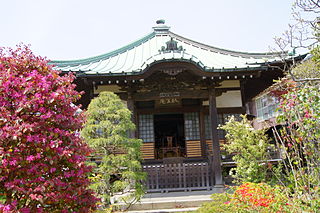
Shugenji Temple is a temple of Nichiren Buddhism located in Kamakura City, Kanagawa Prefecture. The name of the mountain is Mt. Shijo. The main Buddha is the Ten Realms Mandala. The former main temple is Gyotokiyama Mitsunori Temple. Ikegami and Totomi store law.
32. 東漸寺
Tozenji Temple is a temple of Nichiren Buddhism located in Koshigoshi, Kamakura City, Kanagawa Prefecture. The former main temple is the Great Honzan Lotus Sutra Temple. Konishi Horen. One of the eight temples of Ryukouji Ringban.
33. Keiunji Temple
Keiunji Temple is a temple of Nichiren Buddhism located in Kamakura City, Kanagawa Prefecture. The name of the mountain is Shokoyama. The opening of the mountain is a blessing in disguise. The former main temple is Ōmotoyama Honkuji Temple (Rokujōmon-ryū). Konishi Horen.
34. 和田塚
Wadazuka is a medieval memorial mound that is said to have been dedicated to the army of Yoshimori Wada, located at 3-4-7 Yuigahama, Kamakura City, Kanagawa Prefecture. Originally, it was called "Mujodo Mound", and there is a theory that it was one of the Kofun Tombs and Mukaihara Kofun groups from the same Kofun period as the Kagime Mound where the Haniwa (Yokohama National University, Kyoto University collection) and Magata Haniwa were excavated. However, there are some doubts about the use of Wadazuka as an ancient burial mound.
35. 宝善院
Hōzen-in is a temple of the Shingon sect Daikaku-ji branch located in Kamakura City, Kanagawa Prefecture. It is also referred to as "Kaji Mountain Hōzen-in Reigen-ji" and "Taichū Mountain Hōzen-in Rurikō-ji." Since only the temple name is common, it is usually referred to simply as "Hōzen-in."
Share
How likely are you to recommend us?
Disclaimer Please be aware of your surroundings and do not enter private property. We are not liable for any damages that occur during the tours.




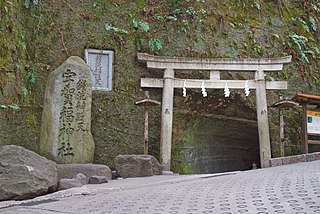

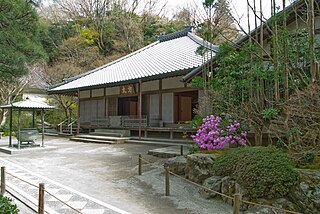

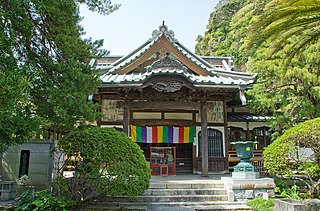
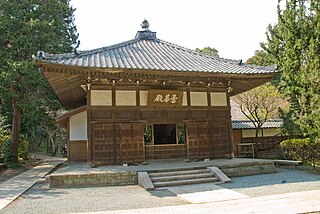
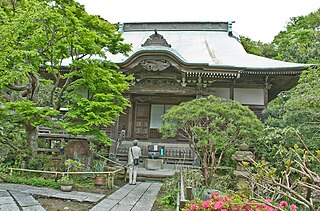
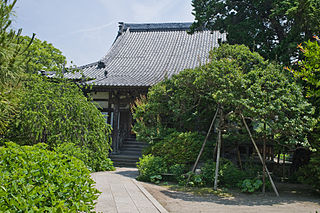


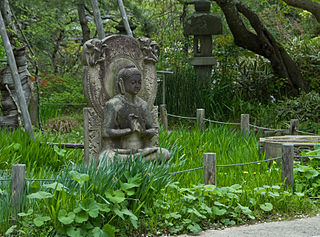
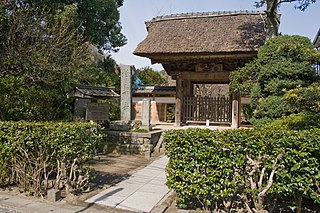

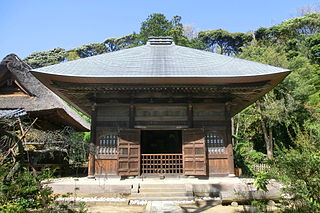
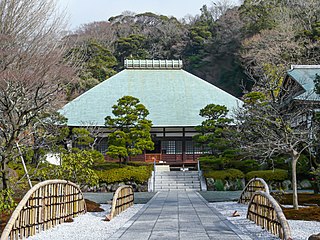
.jpg)
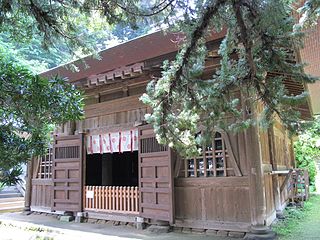

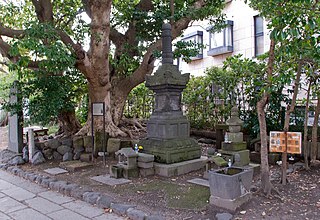
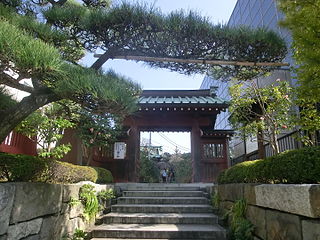
.jpg)

